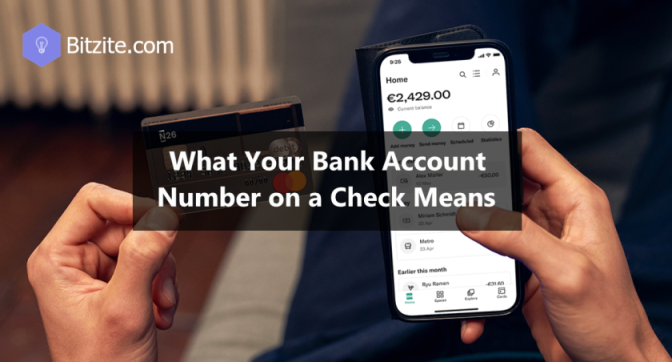Your bank account number on a check is more than just a series of digits. Learn what it means and how to protect it with this informative guide.
Your bank account number is a crucial piece of information that allows you to access your funds and make transactions. It’s important to understand what it means and how to keep it safe, especially when it’s printed on a check. In this guide, we’ll explain everything you need to know about your bank account number and how to protect it.
Understanding the Components of a Bank Account Number.
A bank account number typically consists of a series of digits that identify your specific account. The number may be anywhere from six to 17 digits long, depending on the bank and the type of account you have. The first few digits usually identify the bank itself, while the remaining digits are specific to your account. It’s important to keep your bank account number confidential and to only share it with trusted individuals or institutions.
The Importance of Protecting Your Bank Account Number.
Your bank account number is a crucial piece of information that should be kept confidential to prevent unauthorized access to your funds. It’s important to only share your account number with trusted individuals or institutions, such as your employer for direct deposit or a trusted vendor for automatic bill payments. Be cautious of scams or phishing attempts that may try to trick you into sharing your account number. If you suspect your account number has been compromised, contact your bank immediately to report any unauthorized activity.
How to Keep Your Bank Account Number Safe.
Your bank account number is a sensitive piece of information that should be protected at all times. One way to keep it safe is to avoid sharing it with anyone who doesn’t need it. Be cautious of unsolicited phone calls or emails that ask for your account number, as these may be scams. Additionally, make sure to regularly monitor your bank account for any unauthorized activity and report any suspicious transactions to your bank immediately. Finally, consider using two-factor authentication or other security measures to further protect your account.
What to Do if Your Bank Account Number is Compromised.
If you suspect that your bank account number has been compromised, it’s important to act quickly to minimize any potential damage. Contact your bank immediately to report the issue and ask them to freeze your account. They may also be able to help you identify any unauthorized transactions and take steps to recover any lost funds. Additionally, consider changing your account number and updating any automatic payments or direct deposits that may be affected. Finally, be vigilant about monitoring your account for any further suspicious activity.
Additional Tips for Protecting Your Financial Information.
In addition to being careful with your bank account number on checks, there are other steps you can take to protect your financial information. First, use strong and unique passwords for all of your financial accounts and change them regularly. Second, be cautious when using public Wi-Fi networks, as they may not be secure and could allow hackers to access your information. Finally, regularly monitor your credit report and bank statements for any unauthorized activity.

